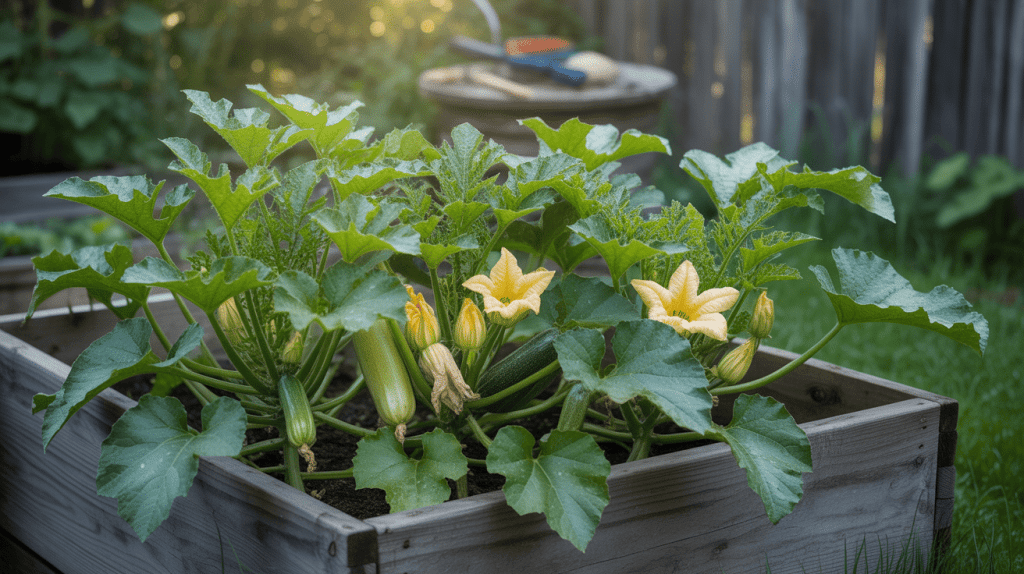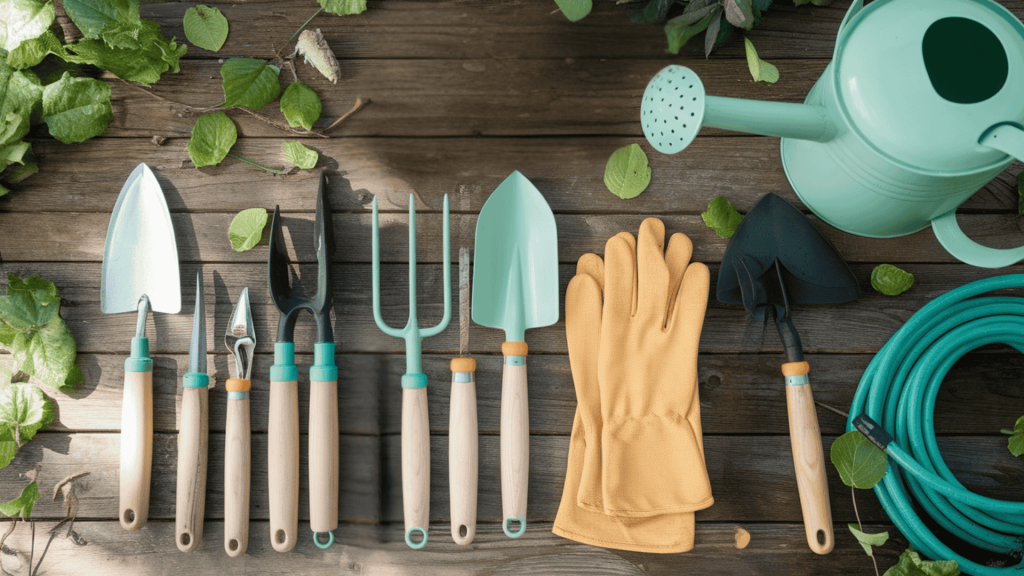Are you ready to experience the incredible satisfaction of growing your own abundant courgette harvests right in your backyard?
Growing courgettes delivers exceptional results for home gardeners.
A single courgette plant produces dozens of tender fruits throughout the season, making these vegetables perfect for beginners and experienced growers.
Their resilient nature means courgettes thrive in most conditions while providing consistent harvests.
Fresh courgettes picked from your garden bring superior flavor to family meals.
These homegrown vegetables taste significantly better than store alternatives, offering tender texture that will impress friends and neighbors.
Many gardeners struggle with demanding vegetables requiring constant care.
Courgettes offer reliable success with minimal effort, producing continuous harvests that reward your gardening efforts with months of delicious produce.
Why Grow Courgettes at Home?
Growing courgettes in your own garden offers incredible rewards for minimal effort.
These productive vegetables are among the easiest crops you can cultivate, delivering exceptional value for both novice and experienced gardeners.
Key benefits of growing courgettes at home:
- Exceptional productivity: A single courgette plant can produce dozens of fruits throughout the growing season
- Fast results: Quick growth rate means you’ll see harvests within weeks of planting
- Beginner-friendly: Remarkably forgiving and resilient plants
- Superior flavor: Home-grown varieties taste significantly better than store-bought, with tender texture and sweet flavor
- Space efficient: Perfect for small gardens, raised beds, or large containers
- Cost-effective: Save money on groceries while enjoying fresh, organic produce
- Abundant harvests: Plenty to share with neighbors, preserve for winter, or experiment with in cooking
These plants thrive in most climates and soil conditions, unlike many vegetables that demand constant attention.
The satisfaction of producing your own food, combined with the practical benefits of fresh vegetables, makes growing courgettes an excellent choice for any home garden.
Choosing the Right Variety of Courgette
Selecting the appropriate courgette variety sets the foundation for a successful harvest. Choose based on your space, growing conditions, and specific needs.
1. For Small Spaces and Containers: Bush varieties like ‘Patio Star’, ‘Bambino’, and ‘Eight Ball’ form compact plants reaching 2-3 feet in diameter.
These work perfectly in containers, raised beds, or limited garden areas while still producing abundant harvests.
2. For Large Gardens: Trailing varieties such as ‘Tromboncino’ and ‘Lebanese’ spread outward or can be trained up supports.
These typically produce higher yields and work well when you have ample space to accommodate their growth.
3. For Disease Prevention: Choose resistant F1 hybrids like ‘Defender’ (cucumber mosaic virus resistance), ‘Sure Thing’ (powdery mildew resistance), or ‘Paridor’ (multiple disease resistance).
These varieties cost more initially but prevent common problems throughout the growing season.
4. For Visual Interest: Yellow varieties like ‘Golden Zucchini’ provide bright color with slightly nuttier flavors, while round types such as ‘Eight Ball’ offer unique shapes perfect for stuffing and attractive presentation in both garden and kitchen.
How to Grow Courgettes?
Growing courgettes successfully requires following a straightforward process from seed to harvest. Before you begin, gather the essential supplies to ensure smooth progress through each step.
Tools and Materials Needed
- Courgette seeds
- Small pots
- Compost
- Well-rotted manure
- Spade
- Pruning shears
With your supplies ready, you can now follow these seven straightforward steps to grow productive courgette plants from seed to harvest.
Step 1: Sowing Seeds
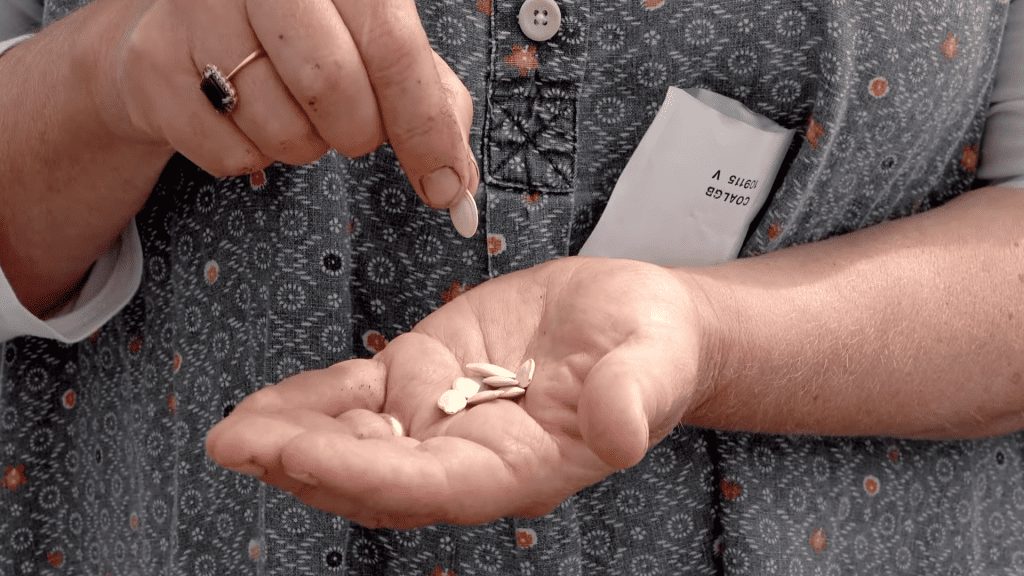
Growing courgettes from seed is incredibly easy – they germinate reliably and grow quickly.
Sow large, flat seeds vertically in individual pots using non-peat compost. Seeds typically germinate within 12 days and develop strong white root systems rapidly.
For continuous harvests, practice succession sowing with three sowings: March (greenhouse), April (outdoor after frosts), and May (late season crops).
Step 2: Prepare the Planting Site
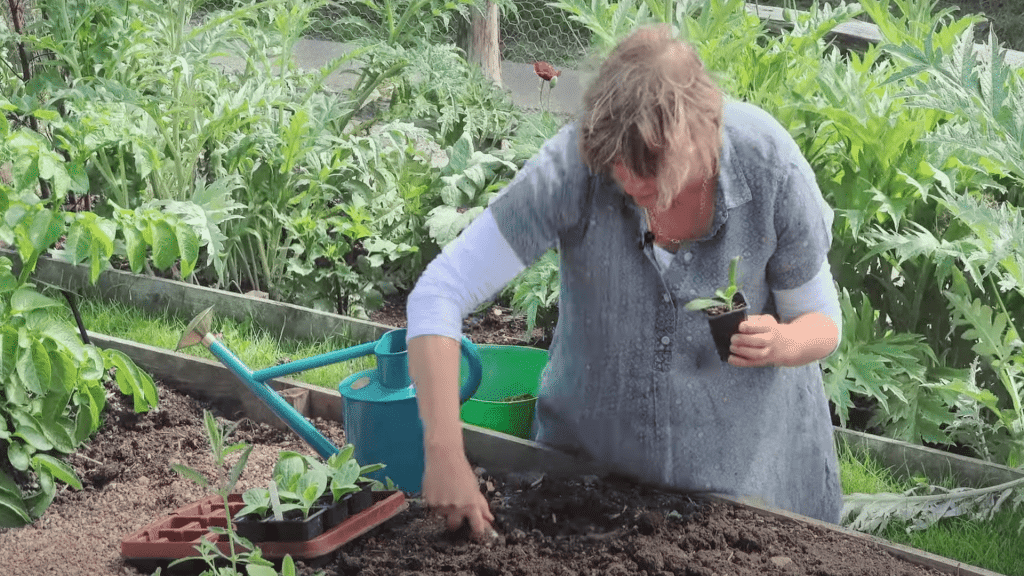
Courgette plants are hungry and thirsty, requiring nutrient-rich soil.
Dig generous holes and fill the bottom with well-rotted farmyard manure. This serves dual purposes – feeding the plant and retaining moisture throughout the growing season.
Cover the manure with a layer of soil so young roots don’t contact neat manure directly.
Step 3: Transplant Seedlings
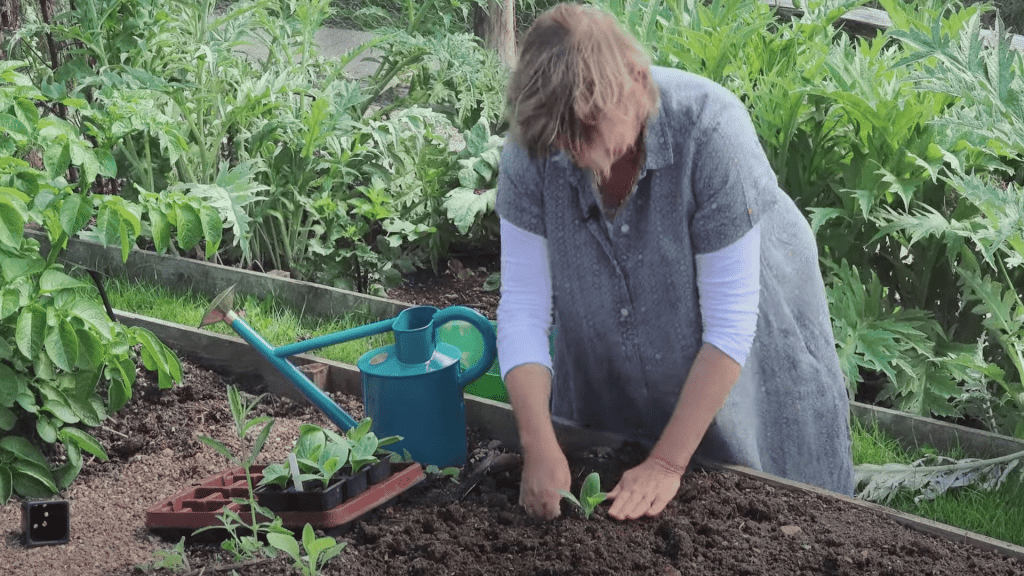
Plant seedlings when they show strong white roots, typically 12-14 days after sowing.
Space plants according to variety – compact bush types need 2-3 feet between plants, while vigorous trailing varieties like Romanesco require meter spacing due to their substantial size.
Plant at the same depth as in the pot and water thoroughly.
Step 4: Harvest at the Right Size
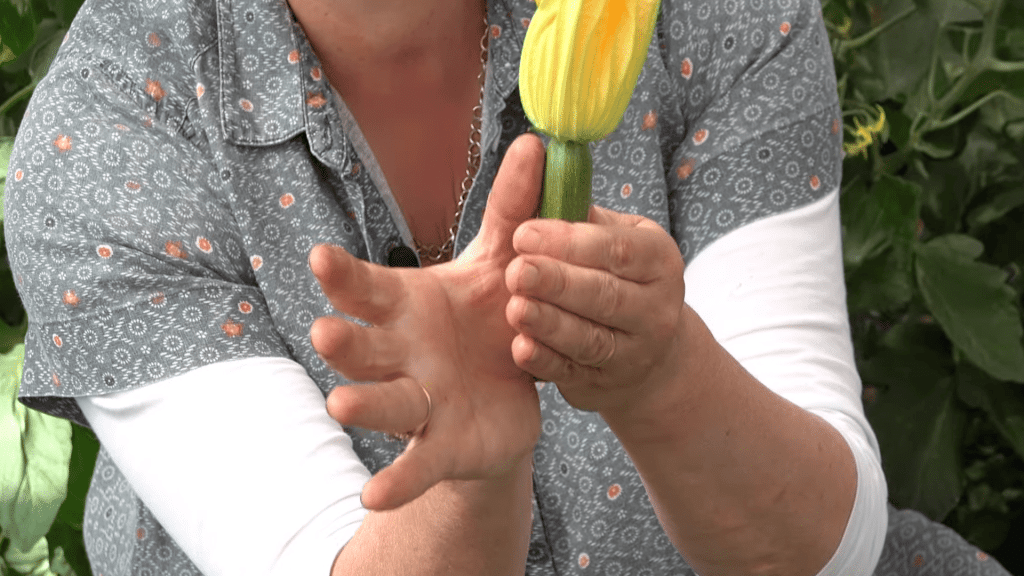
Harvest courgettes when they’re young and tender for the best flavor and texture.
The ideal size measures from the tip of your thumb to its base – approximately 4-6 inches long. At this size, courgettes have a nutty texture, no seeds, and aren’t watery.
Check plants daily during peak season.
Step 5: Manage Plant Growth
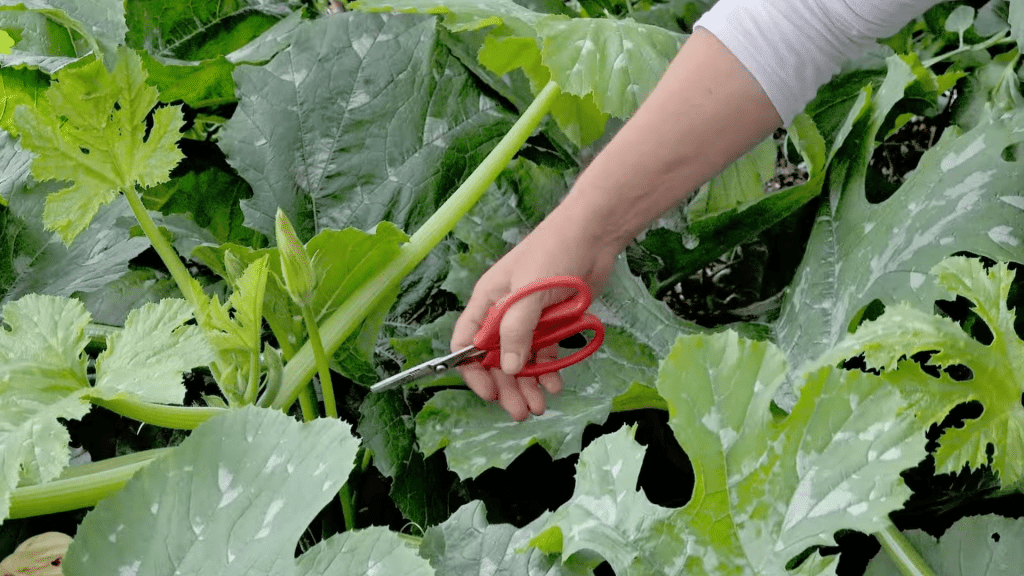
Once plants become lush and jungle-like, remove some of the larger leaves from the plant’s apex.
This prevents leaves from hiding developing fruits underneath and improves air circulation. Simply cut off bigger leaves to reveal hidden courgettes below.
Step 6: Harvest Flowers
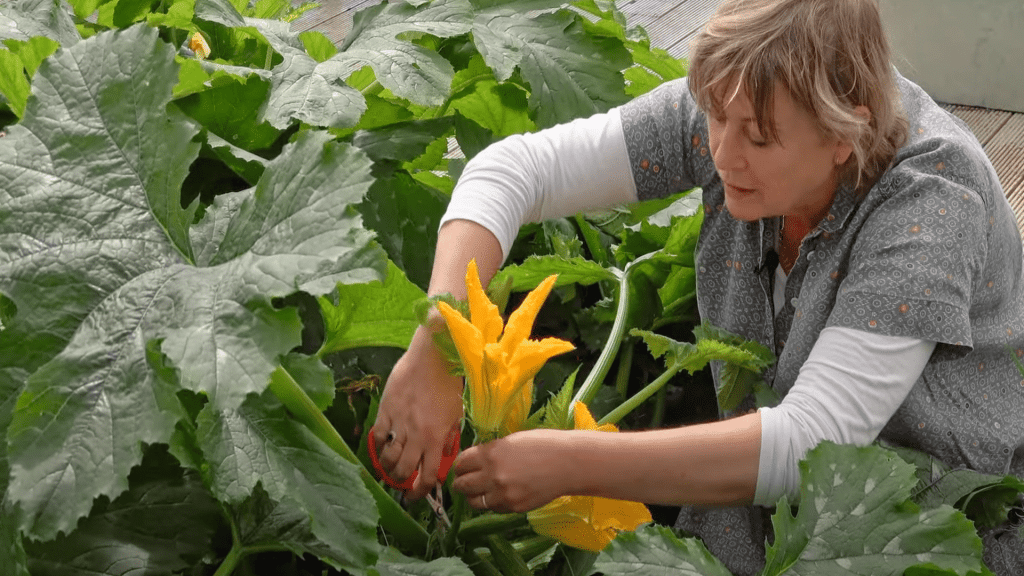
Both male and female courgette flowers are edible.
Male flowers (without fruit behind them) are perfect for stuffing, while female flowers with small fruits attached can also be harvested.
Before cooking, remove the bitter stigma from the flower center and the calyx, leaving just a small stem for handling.
Video Tutorial
I’d like to give credit to Sarah Raven for their informative video, as a reference for this guide.
Courgette Plant Care and Maintenance
Successful courgette cultivation depends on consistent care throughout the growing season. Regular attention to these key maintenance tasks ensures healthy plants and maximum harvests.
During the Growing Season
- Inspect plants weekly for pests, disease, and leaf health
- Water deeply 2-3 times per week, keeping soil moist but not waterlogged
- Feed weekly with liquid fertilizer during the fruiting period
- Remove yellowing or damaged leaves regularly for better airflow
- Mulch around plants to retain moisture and suppress weeds
- Hand-pollinate female flowers if bee activity is low
End of Season Care
Proper end-of-season management sets the foundation for next year’s success while maximizing this year’s final harvest.
These essential tasks help prevent disease carryover and prepare your garden for the following growing season.
| Task | When | Purpose | How |
|---|---|---|---|
| Clear spent plants | After the first frost | Prevent disease carry-over | Remove all plant material and fallen fruits |
| Compost or dispose | During clearing | Recycle nutrients / prevent disease spread | Compost healthy material, bin diseased plants |
| Save seeds | Before clearing | Next year’s planting | Leave a few courgettes to mature fully, extract and dry the seeds |
| Store marrows | Late season | Winter food storage | Allow some fruits to mature for cool, dry storage |
| Sow cover crops | After clearing | Improve soil structure | Plant winter rye or crimson clover |
| Plan crop rotation | End of season | Avoid pest/disease buildup | Choose a different location for next year |
Following these maintenance practices throughout the season and completing proper end-of-season tasks ensures your garden remains healthy and productive.
With consistent care, you’ll enjoy abundant harvests and set the stage for even better courgette crops in future seasons.
The Bottom Line
Growing courgettes successfully turns any garden into a productive food source that delivers fresh harvests for months.
These remarkable plants reward simple care with abundant yields, making them ideal for gardeners seeking reliable results without complicated maintenance.
Your courgette plants will thrive when given proper varieties, basic growing conditions, and consistent care throughout the season.
From compact bush types perfect for containers to trailing varieties that maximize space, there’s always an option suited to your garden situation.
The satisfaction of harvesting fresh courgettes daily while knowing exactly how your food was grown makes every gardening effort worthwhile.
Share your courgette growing experiences and tips in the comments below to help fellow gardeners achieve their best harvests yet.

